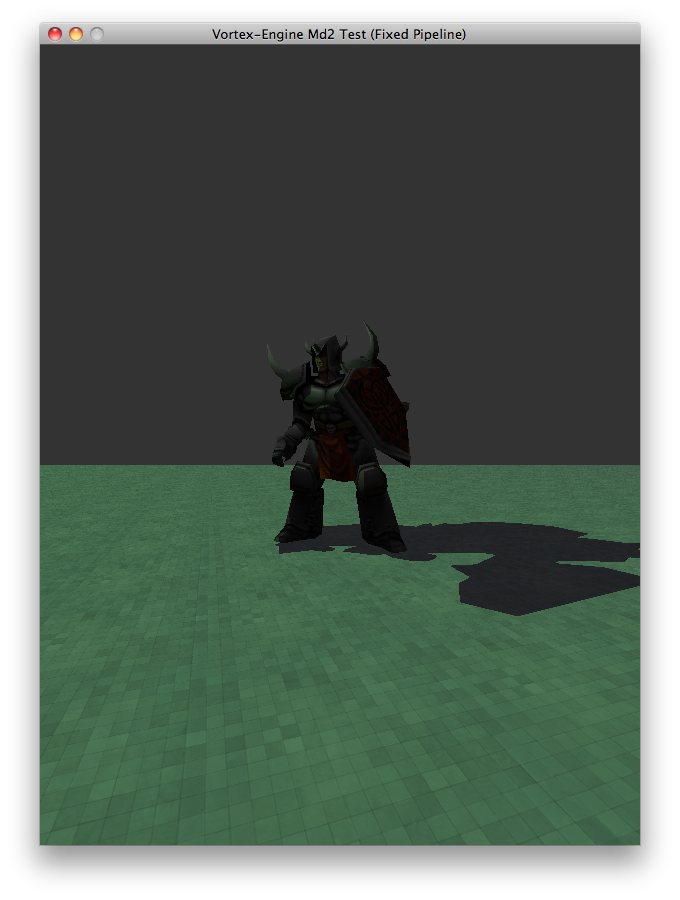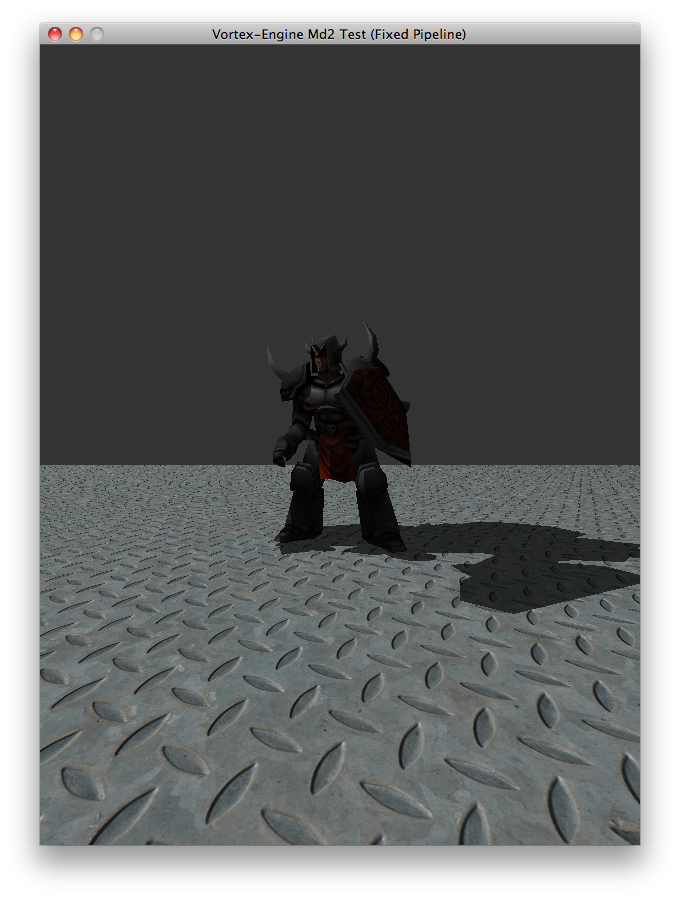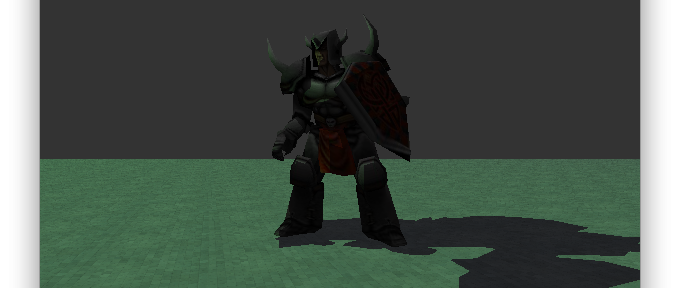Stencil Shadow Volumes
I’ve built Stencil Shadow Volumes into the Vortex Engine.
Shadows are a very interesting feature to implement in an renderer, as they provide important visual cues that help depict the relationship between objects in a scene. Notice in the following image how the shadow tells our brains that the Knight is standing on the floor (as opposed to hovering over it).

The implementation is at this point no more than a prototype and requires significant more testing, however, since the visual results are very appealing, I wanted to share some of the images.
I personally have a bias towards using Shadows Volumes instead of Shadow Maps; I think the former algoritm leaves out much of the guesswork that Shadow Maps require. Furthermore, Shadow Volumes are not subject to some of the limitations of Shadow Maps, such as the map’s resolution.
Another point for Shadow Volumes is the fact that they provide a natural way to implement “soft shadows”: shadows that are not completely black but rather transparent. The following image corresponds to the same scene but with two minor changes: the light has been changed to white and the floor texture is different. Notice how we can see the floor texture englobed in the Knight’s translucent shadow.

I hope we can have Shadow Volumes available for both rendering pipelines as part of Vortex 2.0.
Edit: Thanks to Gabriel G. for noting the term “soft shadows” was being used incorrectly.
